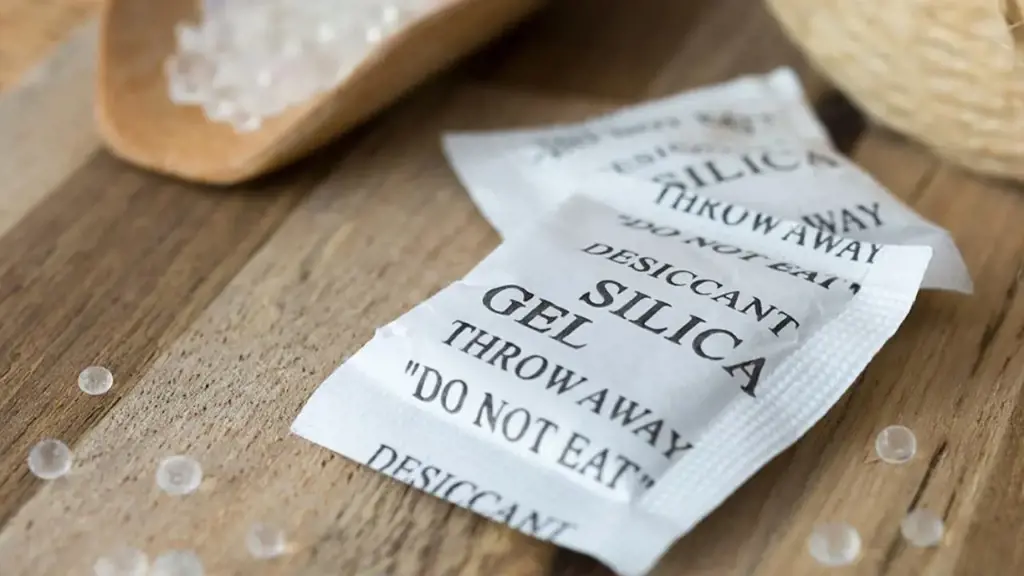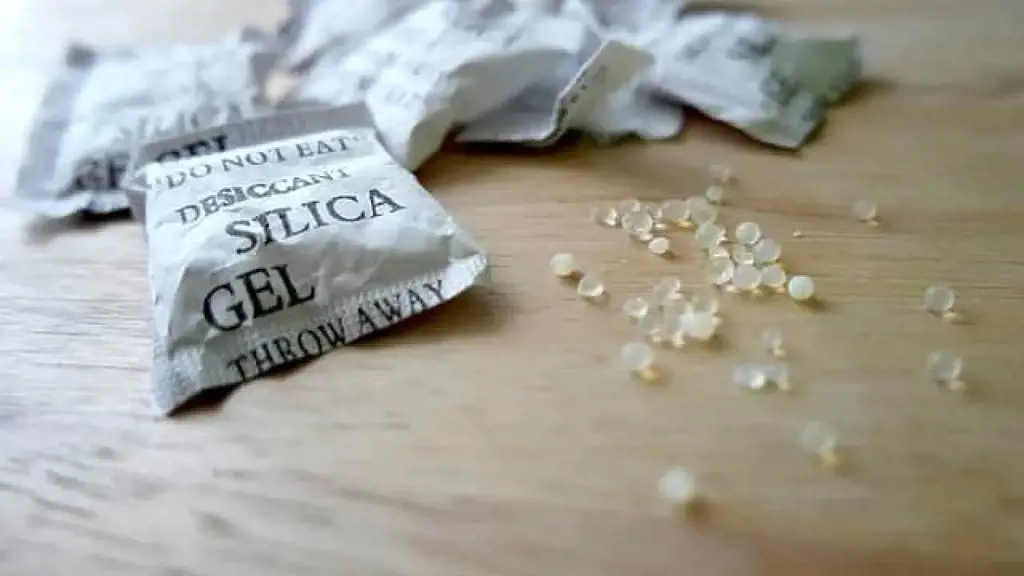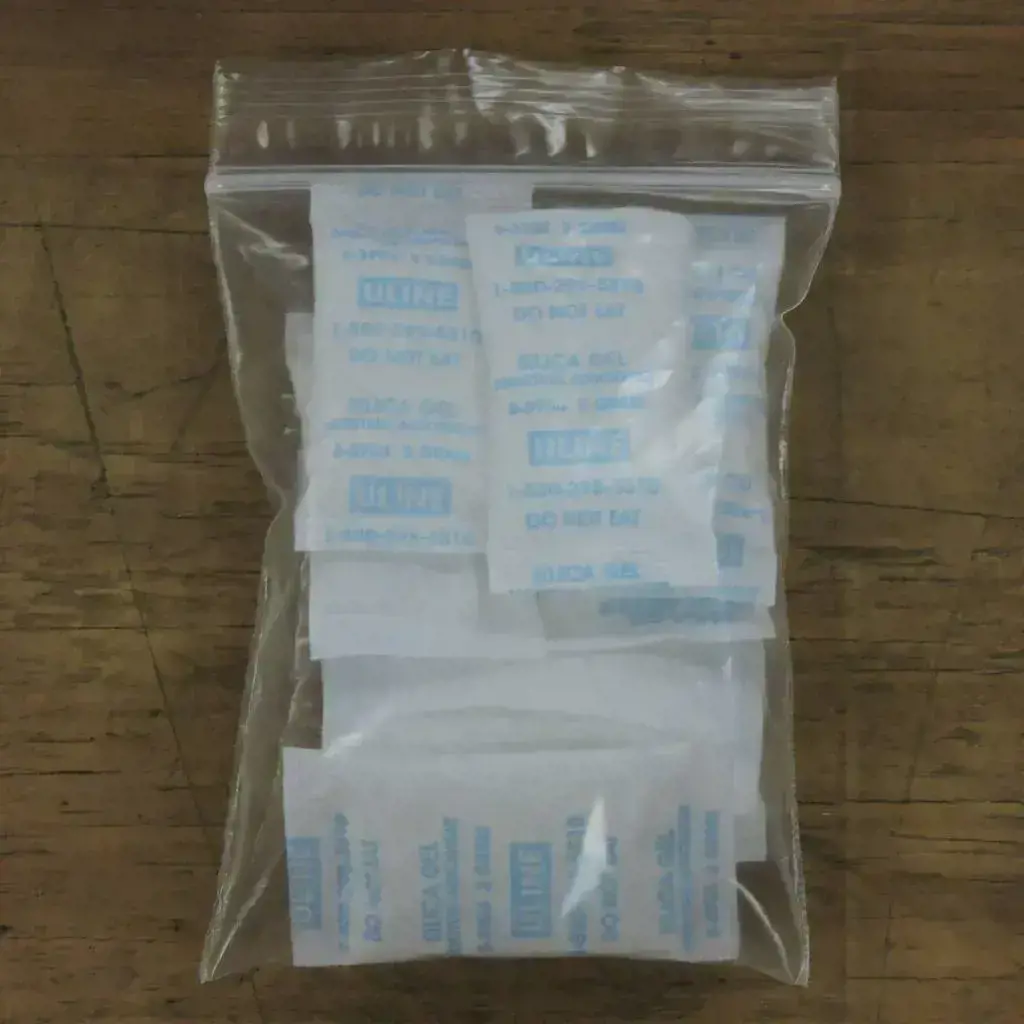
Are you tired of dealing with moisture and humidity ruining your belongings? Whether it's in your basement, storage room, or even your car, excess moisture can be a real nuisance. That's where silica packs come in. These small bags filled with moisture-absorbing silica gel can help keep your items dry and free from damage. But with different sizes available, how do you choose the right one for your needs? In this article, we'll guide you through the process of selecting the perfect size silica pack to combat your moisture problems.
What You'll Learn
- What factors should I consider when determining the size of a silica pack to use?
- How do I determine the appropriate size of silica pack for a specific storage container or packaging?
- Are there different sizes of silica packs available on the market, and if so, how do I choose the right one?
- Can using the wrong size of silica pack have negative effects on the product or materials it is meant to protect?
- Are there any general guidelines or recommendations for selecting the size of a silica pack for different types of products or materials?

What factors should I consider when determining the size of a silica pack to use?

Silica gel packs are commonly used to control moisture and prevent damage in various products and environments. They are small, yet powerful tools that can absorb water vapor from the air, preventing the growth of mold, mildew, and corrosion. When determining the size of a silica pack to use, there are a few key factors to consider.
- Humidity level: The first factor to consider is the humidity level of the environment where the silica pack will be used. High humidity environments will require larger packs to effectively absorb moisture and maintain a dry atmosphere. Low humidity environments, on the other hand, may require smaller packs or even no packs at all.
- Volume of the container: The size of the container or package that needs to be protected also plays a role in determining the size of the silica pack. Larger containers will require larger packs to cover a larger surface area and absorb moisture effectively. Smaller containers may only require smaller packs or even a single pack, depending on the humidity level.
- Duration of protection: The length of time that protection is required will also impact the size of the silica pack. If you need protection for a short period of time, smaller packs may be sufficient. However, if the protection is needed for an extended period, larger packs or multiple packs may be necessary to ensure continuous moisture absorption.
- Specific product requirements: Different products may have specific requirements for moisture control. For example, electronic devices may have certain moisture thresholds that need to be met to prevent damage. In such cases, it is important to select the appropriate size of silica pack that can meet these requirements.
It is also worth noting that silica gel packs typically come in various sizes, ranging from small packs suitable for a shoebox to large packs for storage containers. When in doubt, it is always better to err on the side of caution and choose a slightly larger size, as an oversized silica pack will not harm the product or environment.
To determine the optimal size of a silica pack, it is advisable to consult the manufacturer's recommendations or seek assistance from a specialist who can provide guidance based on the specific needs of the product and environment.
In conclusion, when determining the size of a silica pack to use, factors such as the humidity level, volume of the container, duration of protection, and specific product requirements should be taken into consideration. By carefully considering these factors, you can ensure that your silica pack is adequately sized to provide effective moisture control and protect your products from damage.
Essential Items to Pack for a Fun-Filled Hard Summer Music Festival
You may want to see also

How do I determine the appropriate size of silica pack for a specific storage container or packaging?

Silica packs are commonly used as desiccants to absorb moisture and prevent damage in storage containers and packaging. They are often found in products such as electronics, food packaging, and pharmaceuticals. Choosing the appropriate size of silica pack for a specific container or packaging is important to ensure optimal performance. Here are some steps to help you determine the right size:
Calculate the volume of the container or packaging:
- Measure the length, width, and height of the container in centimeters.
- Multiply the length, width, and height together to get the total volume in cubic centimeters (cm³).
Determine the moisture-sensitive content:
- Identify the moisture sensitivity of the content you are protecting.
- Different products have different moisture tolerances, so it is important to consider this factor.
Consider the relative humidity (RH) inside the container/packaging:
- Determine the target relative humidity level required for the moisture-sensitive content.
- For example, if the content's moisture tolerance is 30% RH, you will need to maintain the relative humidity at or below this level.
Consult the manufacturer's guidelines:
- Many silica pack manufacturers provide guidelines on the appropriate pack size based on container/packaging volumes and desired relative humidity.
- Check the manufacturer's website or packaging for any relevant information.
Use a moisture calculator:
- Some manufacturers offer online moisture calculators to help determine the appropriate size of silica pack.
- Input the container/packaging volume and desired relative humidity, and the calculator will recommend the suitable pack size.
Consider the adsorption capacity:
- Silica packs come in various sizes, ranging from a few grams to several hundred grams.
- Choose a size that offers enough adsorption capacity to absorb moisture based on the container/packaging volume and desired relative humidity.
- It is better to choose a slightly larger size to ensure adequate moisture absorption.
Example:
Let's say you have a small electronics package with a volume of 500 cm³. The moisture-sensitive content has a tolerance of 20% RH. You want to maintain the relative humidity at or below this level.
Using a moisture calculator provided by a silica pack manufacturer, input the container volume (500 cm³) and target relative humidity (20% RH). The calculator recommends a 10-gram silica pack.
Considering the adsorption capacity, you may want to choose a slightly larger size, such as a 20-gram pack, to ensure the content remains protected even under fluctuating humidity conditions.
Remember, these calculations and recommendations may vary depending on the specific product, manufacturer guidelines, and environmental conditions. It is always advisable to consult the manufacturer's instructions or reach out to their customer support for tailored recommendations.
Essential Items for Your Sedona Packing List
You may want to see also

Are there different sizes of silica packs available on the market, and if so, how do I choose the right one?

Silica gel packs are a common sight in shoe boxes, electronics packaging, and even medication bottles. These small packets contain silica gel, a desiccant that adsorbs moisture and helps prevent damage to products and goods. One question that often arises is whether there are different sizes of silica gel packs available on the market and how to choose the right one. In this article, we will explore the different sizes of silica gel packs and provide guidance on choosing the appropriate size for your needs.
Silica gel packs come in various sizes, ranging from small sachets to larger bags. The size of the pack refers to the weight of the silica gel it contains, typically measured in grams. Some common sizes include 1 gram, 5 grams, 10 grams, and 50 grams. Larger packs, such as 1,000 grams or more, are also available for industrial use.
When choosing the right size of silica gel pack, several factors come into play. Here are a few considerations to keep in mind:
- Moisture level: The first factor to consider is the moisture level of the environment or product you want to protect. The higher the moisture content, the larger the silica gel pack you will need. For example, if you want to keep a small electronic device dry in a relatively humid environment, a 1 or 5-gram silica gel pack should suffice. However, if you are storing an entire closet of clothes or a large shipment of goods, you may need multiple 50-gram packs or even larger bags.
- Space availability: Another important factor is the available space for placing the silica gel packs. If you have limited space, smaller packs may be more suitable as they can be easily tucked into tight corners or packaging. On the other hand, if space is not a concern, larger packs can provide greater moisture-absorbing capacity and require less frequent replacement.
- Duration of protection: Consider how long you need the silica gel packs to provide protection. Smaller packs tend to absorb moisture more quickly, but they may also need to be replaced more frequently. For longer-term storage or protection, larger packs or bags may be preferable as they have a higher adsorption capacity and can last longer without needing replacement.
In some cases, it may also be beneficial to use a combination of different pack sizes. For example, if you are storing a box of delicate electronics in a larger container, placing a few smaller packs inside the box can provide localized moisture protection in addition to the overall protection offered by the larger packs.
It is worth noting that silica gel is non-toxic and chemically inert, making it safe for most applications. However, if you are using silica gel packs in direct contact with food or medications, make sure to choose packs specifically labeled as safe for such uses.
In conclusion, choosing the right size of silica gel pack depends on factors such as moisture level, available space, and duration of protection. Assessing these factors will help you determine the appropriate pack size to effectively prevent moisture damage to your products or goods. Remember to follow any specific guidelines provided by the manufacturer and consider using a combination of pack sizes for optimal protection.
Essential Items to Pack for Lollapalooza: Your Ultimate Checklist
You may want to see also

Can using the wrong size of silica pack have negative effects on the product or materials it is meant to protect?

Using the Wrong Size Silica Pack: Risks and Effects
Silica packs, also known as desiccant packs, are commonly used to protect goods and materials from moisture damage. They are widely used in various industries, such as food packaging, pharmaceuticals, electronics, and textiles. Silica packs are designed to absorb moisture and maintain a dry environment around the products they are intended to protect. However, using the wrong size of silica pack can have negative effects on the product or materials it is meant to safeguard.
Silica packs come in different sizes, usually ranging from 1 gram to 5 grams. The size of the pack needed depends on the size of the container or package and the level of moisture that needs to be controlled. Using a larger or smaller silica pack than necessary can have adverse effects on the product or material.
One of the main risks of using the wrong size silica pack is insufficient moisture control. If a smaller pack is used, it may not be able to absorb enough moisture to maintain a dry environment. This can lead to the buildup of moisture and subsequent damage to the product or material. For example, in the pharmaceutical industry, moisture-sensitive medications can degrade, lose potency, or become contaminated if not properly protected from excess moisture. Using a smaller silica pack may compromise the product's quality and affect its effectiveness.
On the other hand, using a larger silica pack than necessary can also have negative consequences. While a larger pack may be able to absorb more moisture, it can create an overly dry environment for the product or material. This can lead to the drying out of certain materials or products that require a specific level of moisture to stay in optimal condition. For instance, leather goods may crack or become brittle if exposed to excessively dry conditions due to the use of an oversized silica pack.
Another potential effect of using the wrong size silica pack is cost inefficiency. Larger packs are typically more expensive than smaller ones. Therefore, using larger packs than necessary can result in unnecessary expenses. Additionally, using smaller packs may require more frequent replacements, leading to increased costs in the long run.
To ensure the proper use of silica packs, it is recommended to follow the manufacturer's instructions or guidelines. This involves selecting the appropriate size of silica pack based on the package or container size and desired moisture control level. Manufacturers often provide recommendations on the size and quantity of silica packs required for different applications.
In conclusion, using the wrong size of silica pack can have negative effects on the product or material it is meant to protect. Insufficient moisture control, excessive drying, and cost inefficiency are some of the potential risks associated with using the wrong size of silica pack. It is important to carefully consider the size of the pack based on the specific requirements of the product or material to ensure optimal protection and performance.
The Ultimate Packing List for a July Trip to Europe
You may want to see also

Are there any general guidelines or recommendations for selecting the size of a silica pack for different types of products or materials?

When it comes to protecting products or materials from moisture damage, silica packs are a commonly used solution. Silica gel is a highly absorbent substance that can help keep items dry and free from humidity-related issues such as mold, mildew, and corrosion. However, selecting the appropriate size of silica pack for different types of products or materials is important to ensure optimal performance. Here, we will provide some general guidelines and recommendations for choosing the right size of silica pack.
- Assess the size and nature of the item: The size and nature of the item you want to protect will play a significant role in determining the appropriate size of the silica pack. Larger items will require larger silica packs, while smaller items may only need smaller packs. Additionally, items that are more susceptible to moisture damage, such as electronics or precision equipment, may require larger packs to ensure sufficient adsorption capacity.
- Determine the desired moisture level: Consider the desired moisture level for your product or material. For items that require extremely low humidity levels, such as sensitive electronic components, it is necessary to use larger silica packs to ensure effective moisture control. On the other hand, items that can tolerate slightly higher humidity levels may require smaller packs.
- Calculate the volume of the packaging: To determine the appropriate size of silica pack, you will need to estimate the volume of the packaging. This can be done by measuring the length, width, and height of the packaging and multiplying them together. Once you have the volume, you can consult a chart or table provided by the manufacturer to determine the recommended pack size based on volume.
- Consider the environmental conditions: The environmental conditions in which the item will be stored or transported should also be taken into account. If the product will be exposed to high temperatures or extreme humidity, larger silica packs may be necessary to provide adequate moisture control. Conversely, in more controlled environments, smaller packs may suffice.
- Follow manufacturer guidelines: Manufacturers of silica packs often provide guidelines and recommendations for the sizes of packs based on the specific application or industry. These guidelines are based on extensive testing and research conducted by the manufacturer, so it is recommended to follow them for optimal performance.
Example:
Let’s say you are packaging a small electronic device that is highly sensitive to moisture. The packaging dimensions are 10cm x 15cm x 5cm, resulting in a volume of 750 cm3. Based on the manufacturer's recommendation, you find that a 1 gram silica pack is sufficient for every 200 cm3 of volume. Therefore, for a volume of 750 cm3, you would need approximately 4 grams of silica pack.
In conclusion, selecting the appropriate size of silica pack for different types of products or materials is crucial to ensure optimal moisture control. By considering the size and nature of the item, the desired moisture level, the volume of the packaging, environmental conditions, and manufacturer guidelines, you can make an informed decision on which size of silica pack to use. This will help protect your products or materials from moisture damage and ensure their longevity.
The Key Equipment Used to Pack a Pitch Perfectly
You may want to see also
Frequently asked questions
For a small container, such as a pill bottle or a jewelry box, a 1 gram silica pack should be sufficient. This size is small enough to fit in most small containers while still providing enough silica gel to absorb moisture.
For a medium-sized container, such as a shoebox or a storage bin, a 5 gram silica pack should be appropriate. This size is larger than the 1 gram pack and can absorb more moisture, making it suitable for larger spaces.
For a large container, such as a toolbox or a storage room, a 10 gram silica pack would be recommended. This size pack has a higher moisture absorption capacity and is better suited for larger spaces where there may be more moisture to absorb.
Yes, using multiple smaller silica packs can be an effective alternative to using a single larger pack. By scattering smaller packs throughout the container, you can ensure that moisture is absorbed evenly. However, keep in mind that using multiple smaller packs may require more time and effort to distribute them throughout the container.







